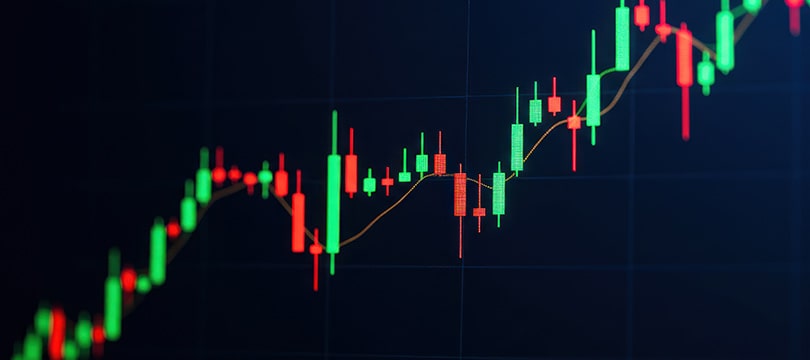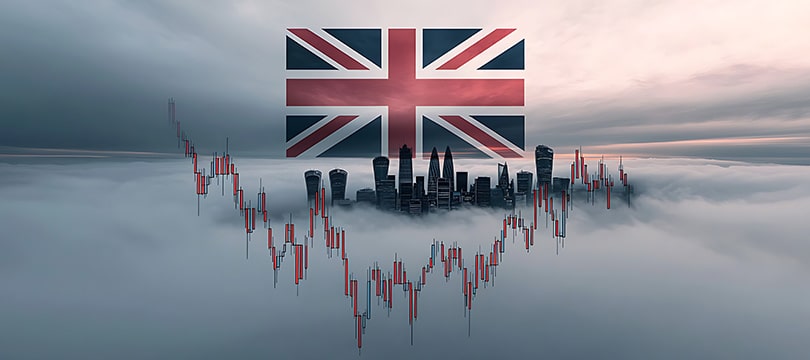The landscape of technical analysis tools is known to be extremely rich. Oscillators, moving averages, patterns, custom indicators: those who approach trading find themselves immediately immersed in a complex world.
Amid this abundance, which often triggers the classic embarrassment of choice, some "Columbus' eggs" stand out, i.e., parameters of relatively disarming simplicity, but which often prove to be more useful than many complex tools. A specific example for Forex trading? Volume.
Volume, after all, represents a fundamental element for understanding the quality and consistency of a market movement. It does not merely indicate what the price is doing but suggests how strong that movement is and how many traders are participating in it. Hence, the possibility of integrating it into one's trading activity.
We'll discuss this in the following article. We will reveal the true meaning of volume, describe the best strategies, and present the most common mistakes.
What is meant by volume
But let's start from the basics, i.e., from the definitions. In the context of trading, volume indicates the quantity of financial instruments traded in a given time interval. It can be stocks, futures contracts, options, forex lots, or cryptocurrencies.
Volume is recorded on each single candle of the chart and updated in real-time in regulated markets.
In the stock market, for example, it indicates how many shares have actually been bought and sold during the session.
It is important to specify that volume is represented with different degrees of precision depending on the markets.
In centralized markets, volume data are objective and complete; in decentralized markets, such as Forex, volume is often represented indirectly through tick volume, i.e., the number of price variations that occurred in a given period.
Although this type of data is less precise, it is still useful for monitoring market activity.
The behavior of volume, clearly, varies as market conditions change. For instance, when the market is in congestion, volume tends to decrease. On the other hand, when it approaches a breakout or significant events occur (e.g., economic news), volume tends to increase. Indeed, one of the main functions of volume is to confirm price movements: a movement lacking volume is often considered weak or destined to exhaust itself, while a movement accompanied by increasing volume suggests participation and coherence.
To correctly interpret volume, specific technical indicators are generally relied upon. Here are the most well-known ones.
- OBV (On Balance Volume). This indicator aggregates volume and filters it based on the direction of the price. An increase in OBV suggests accumulation, a decrease indicates distribution.
- Volume Oscillator. This indicator calculates the difference between two moving averages of volume to identify accelerations or decelerations in participation.
- VWAP (Volume Weighted Average Price). This indicator calculates the average price weighted by volume, offering a useful reference to understand if transactions occurred above or below the market average.
The best volume-based strategies
Using volumes does not mean adding a filter, but rather ensuring access to structural information about market behavior. Hence, the birth of some volume-based trading strategies. Here are the three most well-known ones.
Breakout with volume confirmation
One of the most classic situations in which volume plays a key role is during the breakout of significant technical levels, such as static supports, resistances, or trendlines. In these cases, the presence of a marked increase in volume is interpreted as a confirmation of the movement, as it signals widespread involvement of traders.
When the price breaks a resistance, the breakout operation is considered more reliable if the volume explodes upwards. Otherwise, the breakout can be considered weak and destined to re-enter the range. The same principle applies to downward breakouts.
The operational approach involves entering the market at the close of the breakout candle, conditioned by a volume higher than the average. The stop level should be positioned just below (or above, in bearish cases) the breakout point, while the target can be calculated based on the width of the previous lateral phase or on subsequent relevant price levels.
Price-OBV divergence
The second approach exploits the On Balance Volume. It does so to detect divergences between the behavior of prices and that of cumulative volume.
For those who don't know, this divergence occurs when the price makes a new high or low, but without confirmations from the OBV. This type of signal is important, as it can be interpreted as an early signal of a possible reversal or trend exhaustion.
Let's give an example. Let's assume that the price of a stock marks a new high but the OBV is falling or stable: well, this means that the movement is not accompanied by an increase in participation. Therefore, we are in the presence of a symptom of weakness of the current trend.
But the OBV is also useful in the operational phase. In this case, the divergence between price and OBV can be used as an element to anticipate a reversal, especially if confirmed by other signals (candlestick patterns, overbought or oversold levels).
VWAP for intraday trading
The Volume Weighted Average Price is a central tool in intraday trading, widely used by institutional traders to measure the quality of executions. But it can also be used to build simple and functional operational strategies.
The VWAP represents the equilibrium point between price and volume. If the price is above the VWAP, the context can be considered as dominated by buyers; if it is below, by sellers. However, the true utility of the VWAP emerges when it is accompanied by an increase or contraction in volume. When the price breaks the VWAP upwards with increasing volumes, a long entry can be considered. The opposite applies to bearish scenarios.
This strategy works well in liquid markets and on timeframes such as 5 or 15 minutes. Entry points are determined by the breakout of the VWAP, targets by the closest technical levels (intraday supports and resistances), while stops are placed just below or above the VWAP, depending on the direction of the operation.
Mistakes to avoid
Despite the relative simplicity of the concept of volume, using it is not easy, especially for beginners. Hence, the spread of some rather serious errors.
One of the most common mistakes is to rely exclusively on volume as an entry or exit criterion, ignoring the general context of the market. Volume alone is not enough: it must always be interpreted in light of price behavior, volatility, technical levels. It is the golden rule of technical analysis: no indicator is sufficient on its own.
Another common mistake consists in comparing absolute volumes between different assets or sessions without contextualizing. It makes no sense to compare the average volume of a cryptocurrency with that of a U.S. stock, nor to draw conclusions by comparing the volume of a Monday morning with that of a Friday of a technical expiration. Each asset has its own liquidity structure, which varies over time.
Finally, a common mistake consists in neglecting the quality of the volume data source, especially in decentralized markets such as Forex or cryptocurrencies. Using volumes derived from low-quality brokers can generate misleading readings. In these cases, it is preferable to adopt a combined approach, flanking volume with tools such as momentum, ADX, or historical volatility. It's a matter of covering one's back.




